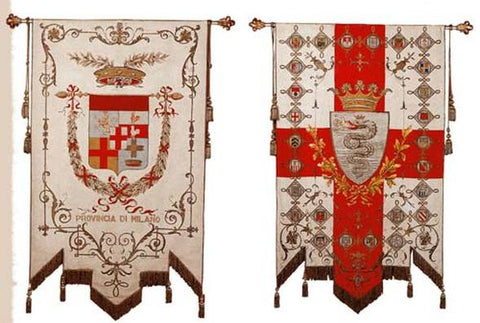Heraldic Flags and Standards part 2
Flags were not only used by the nobility in the Middle Ages, the military used flags bearing regimental colors and in the Catholic Church the position of gonfalonier, or standard-bearer, of the Church, was one of the most prestigious offices the pope could bestow. The office of gonfalonier takes its name from another type of flag popular among city states and other nations during the Middle Ages, the gonfalone (image above). Such flags were often massive in size and bore many tails. They were carried hanging down from a cross beam, like the sail of a ship. Prior to battle the gonfalone was blessed by the clergy and it was considered a great disgrace to lose it as some were...



